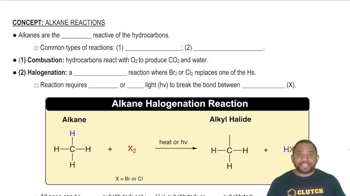Here are the essential concepts you must grasp in order to answer the question correctly.
Law of Conservation of Mass
The Law of Conservation of Mass states that matter cannot be created or destroyed in a chemical reaction. This principle is fundamental when balancing chemical equations, as it requires that the number of atoms of each element must be the same on both sides of the equation. Understanding this law helps ensure that all reactants and products are accounted for in the balanced equation.
Recommended video:
Law of Conservation of Mass
Stoichiometry
Stoichiometry is the calculation of reactants and products in chemical reactions based on the balanced equation. It involves using mole ratios derived from the coefficients of the balanced equation to determine the amounts of substances involved. Mastery of stoichiometry is essential for accurately balancing equations and predicting the outcomes of chemical reactions.
Recommended video:
Types of Chemical Reactions
Recognizing the types of chemical reactions—such as synthesis, decomposition, single replacement, and double replacement—can aid in balancing equations. Each type has specific patterns and rules that can simplify the balancing process. Understanding these categories allows for a more strategic approach to identifying how reactants transform into products.
Recommended video:
Common Types of Alkane Reactions
 Verified step by step guidance
Verified step by step guidance


